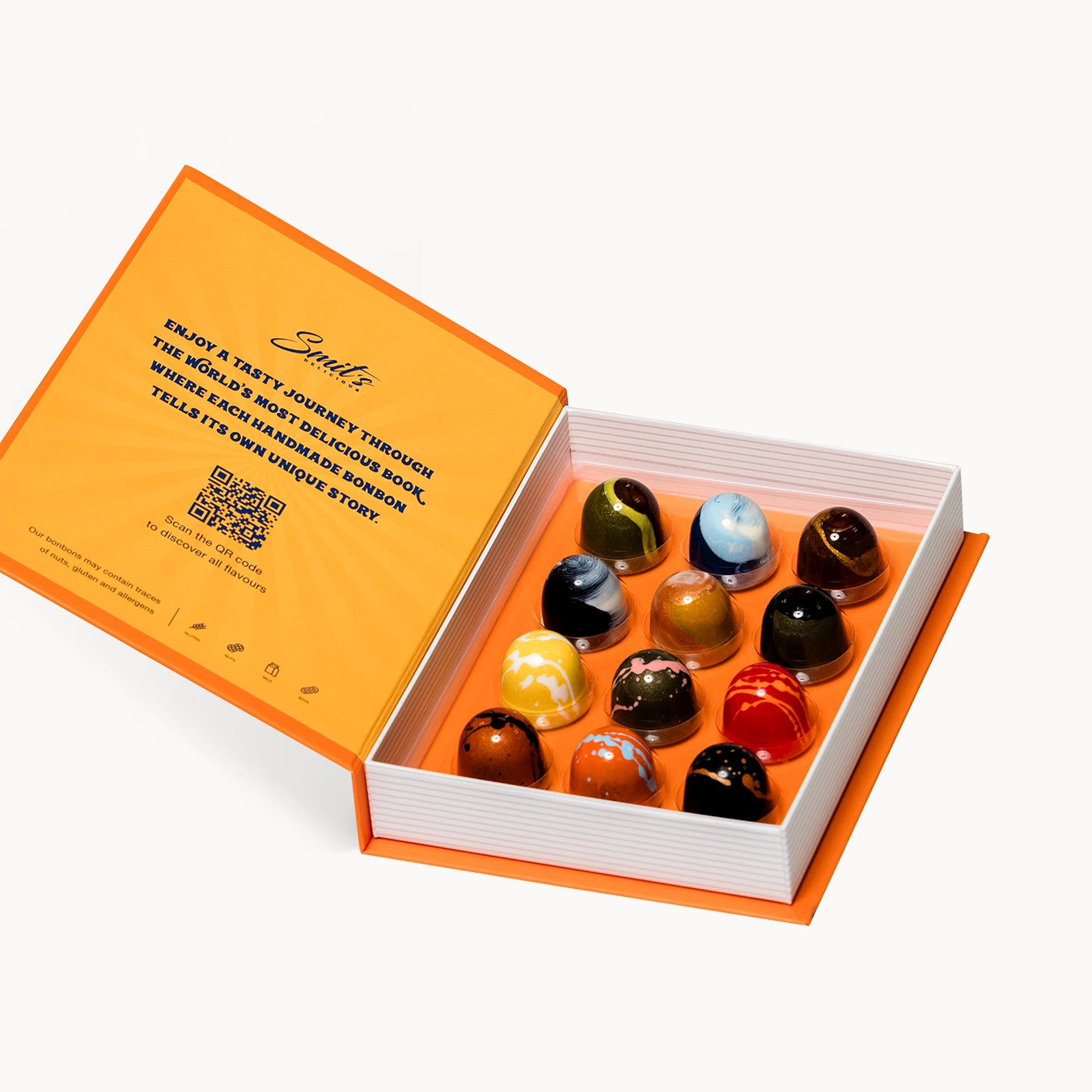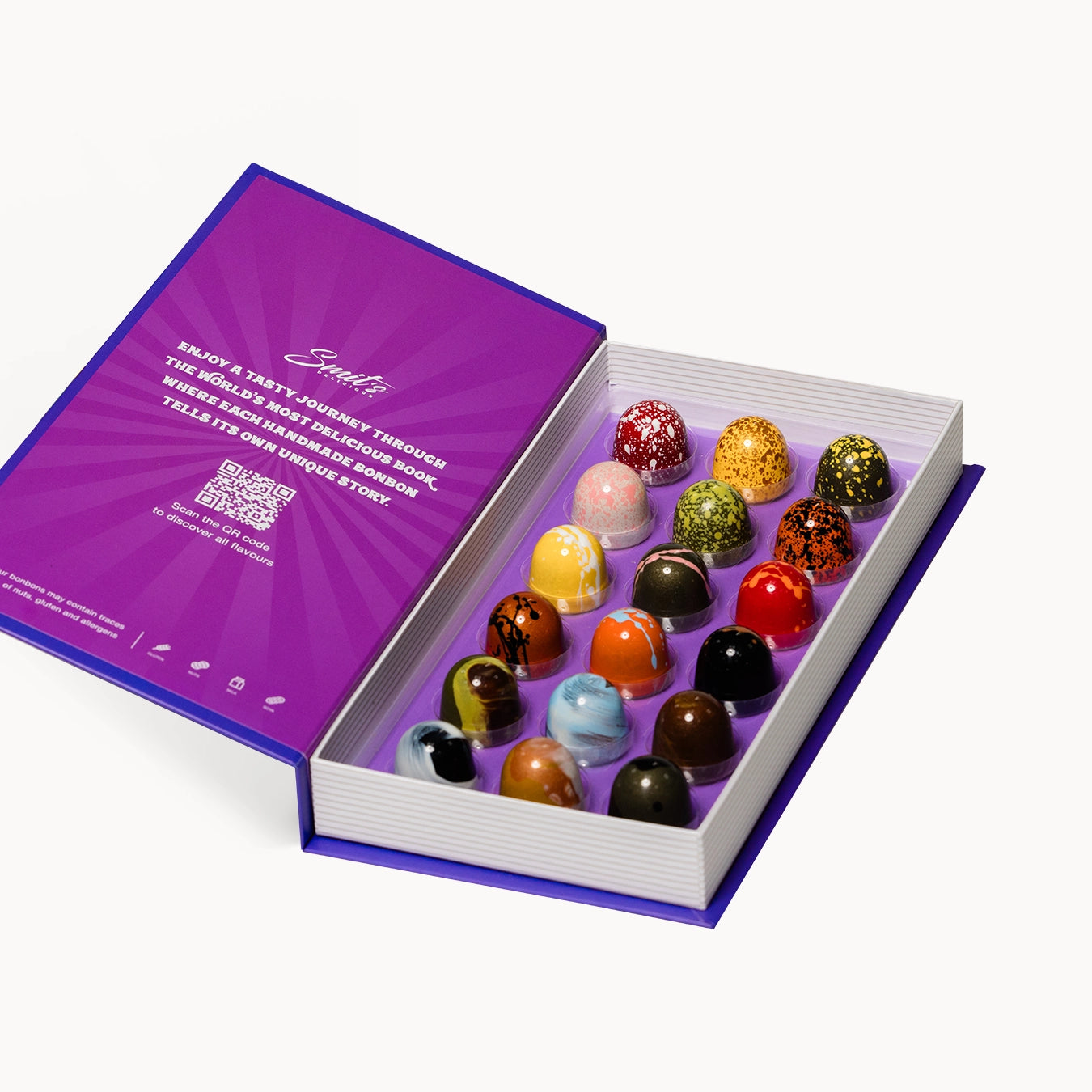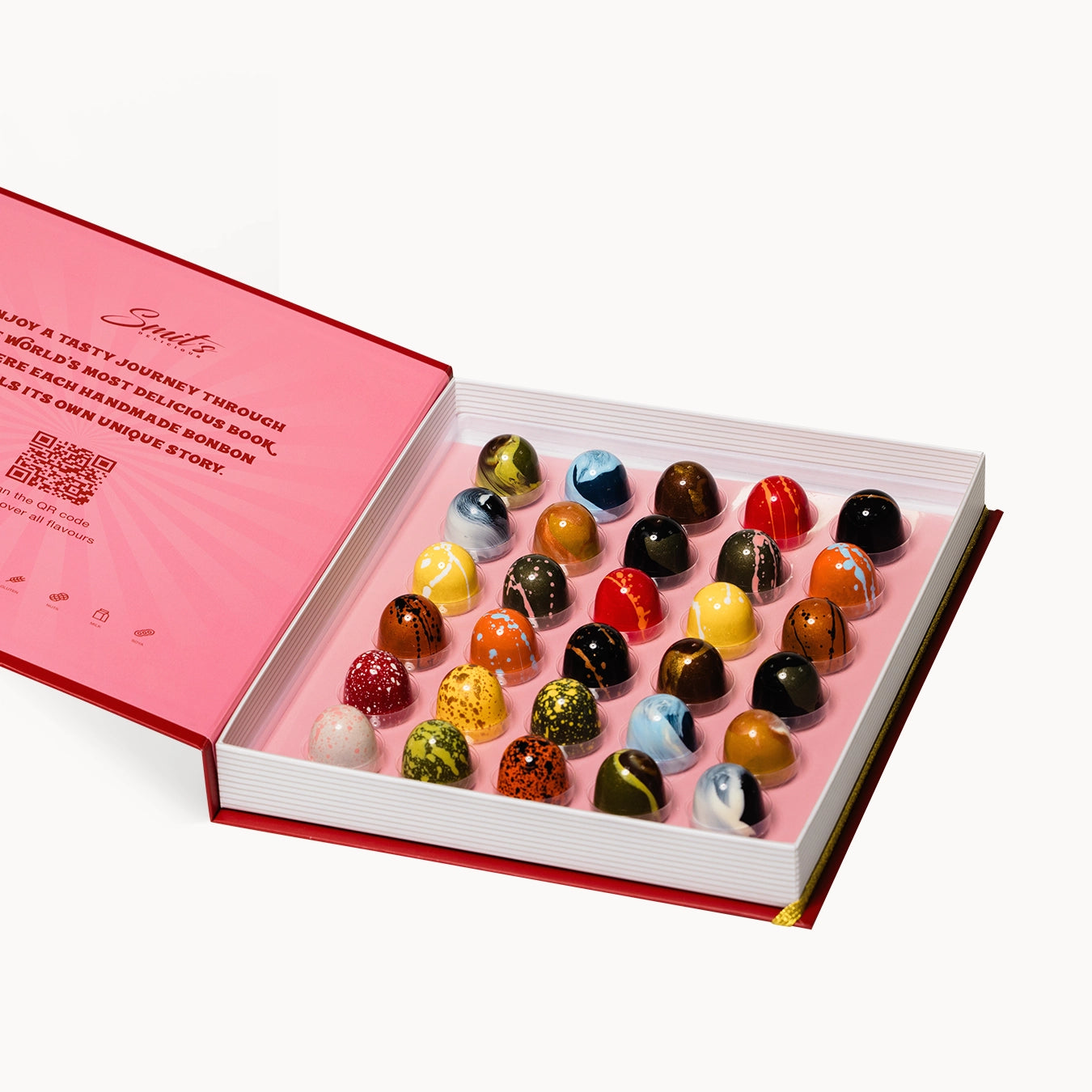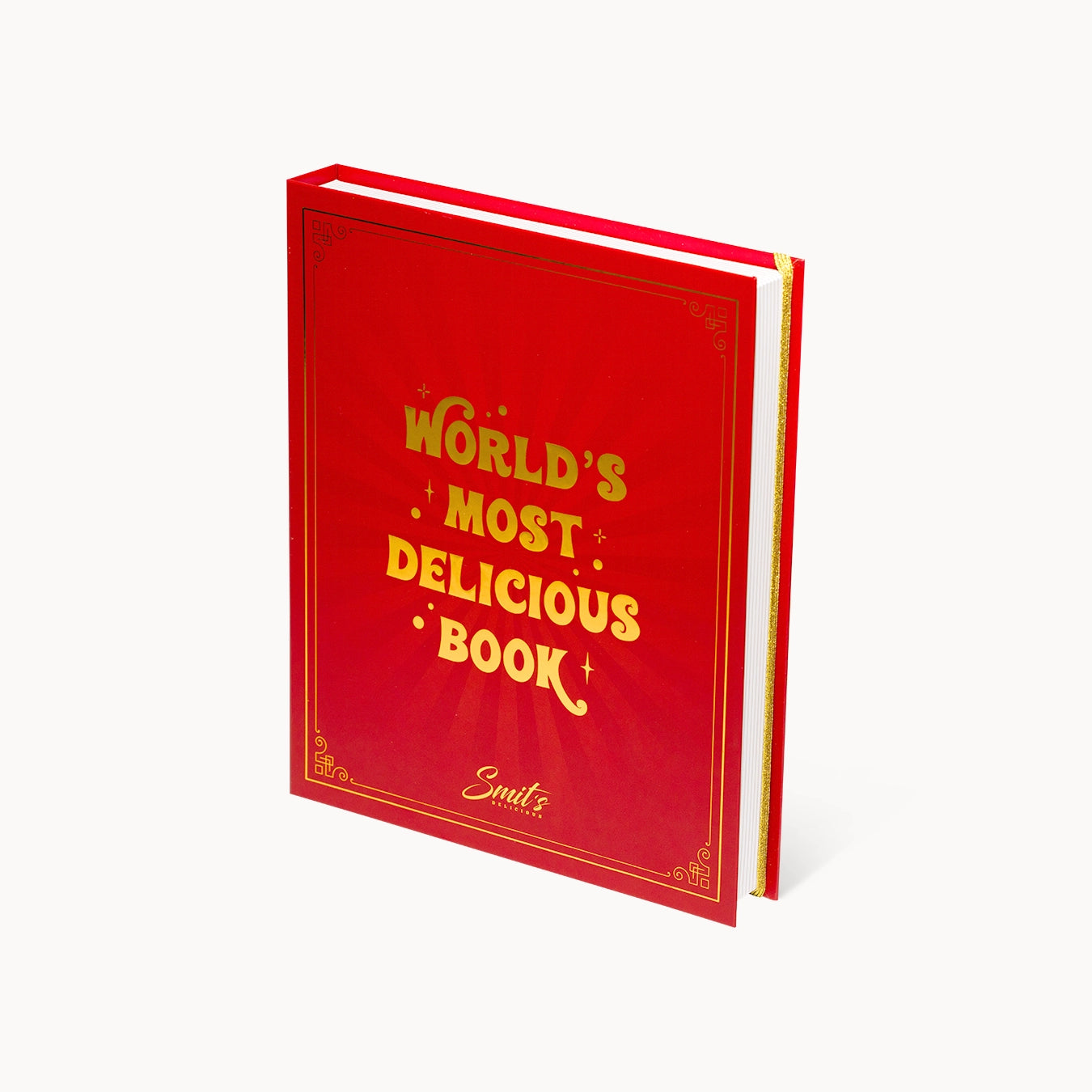Chocolate is available everywhere, but not every bar or bonbon is of high quality. How do you know if you really have good chocolate in your hands? As a chocolatier, I’d love to share a few tips on how to recognize the best chocolate and enjoy it the way it’s meant to be!
At Bonbonbook, we work exclusively with the finest chocolate. We consciously choose Valrhona chocolate because of its exceptional quality and rich, complex flavor. In addition, we use fair, sustainable ingredients so you not only enjoy a delicious bonbon but also contribute to a better world.
1. Look at the ingredients list
Real quality chocolate contains only a few ingredients. Pay attention to the following points:
-
Cocoa mass or cocoa butter as the first ingredient – This is a sign of pure chocolate without unnecessary additives.
-
Few or no additives – Good chocolate contains no artificial flavorings, palm oil, or excessive sugars.
-
Fair and sustainable cocoa – Labels such as Fairtrade or Rainforest Alliance indicate responsibly sourced cocoa.
2. The shine and color
Take a close look at the chocolate. A good bar or bonbon has a glossy surface without a white haze. The color can vary depending on the cocoa percentage but should look rich and even. A dull, grayish layer (fat bloom) may indicate temperature fluctuations or aging.
3. The break test: the perfect “snap” sound
Take a piece of chocolate and break it in half. Quality chocolate makes a sharp, clear “snap” without crumbling. This shows that the chocolate has been properly tempered and has the right cocoa butter structure.
4. The aroma
Hold a piece of chocolate close to your nose and inhale. Good chocolate has a deep, rich aroma with notes of cocoa, nuts, fruit, or caramel, depending on its origin. If the smell is weak or artificial, the chocolate is likely of lower quality.
5. Let it melt in your mouth
Take a bite and let the chocolate slowly melt on your tongue. Good chocolate has a silky-smooth texture and a long-lasting, layered flavor. Poor-quality chocolate often feels greasy or doesn’t melt properly due to a high amount of vegetable fats.
6. Taste the complexity
Just like wine, real chocolate has complex flavor layers. You may discover notes of fruit, flowers, spices, or even coffee. The longer the flavor lingers and the more nuances you taste, the better the chocolate.
7. The origin of the cocoa
Top chocolatiers often mention the origin of their cocoa. Chocolate made from single-origin cocoa (from one specific region) often has a unique flavor and is a mark of high-quality chocolate.
Conclusion: choose consciously, taste mindfully
Real chocolate is a true taste experience. By paying attention to the ingredients, texture, aroma, and flavor, you can distinguish between mass production and artisanal top quality. At Bonbonbook, we make sure every bonbon tells a story and is crafted from the very best, fair chocolate.
So the next time you buy chocolate, put it to the test and discover how truly delicious chocolate is meant to taste!
What’s your favorite kind of chocolate? Let us know in the comments!












